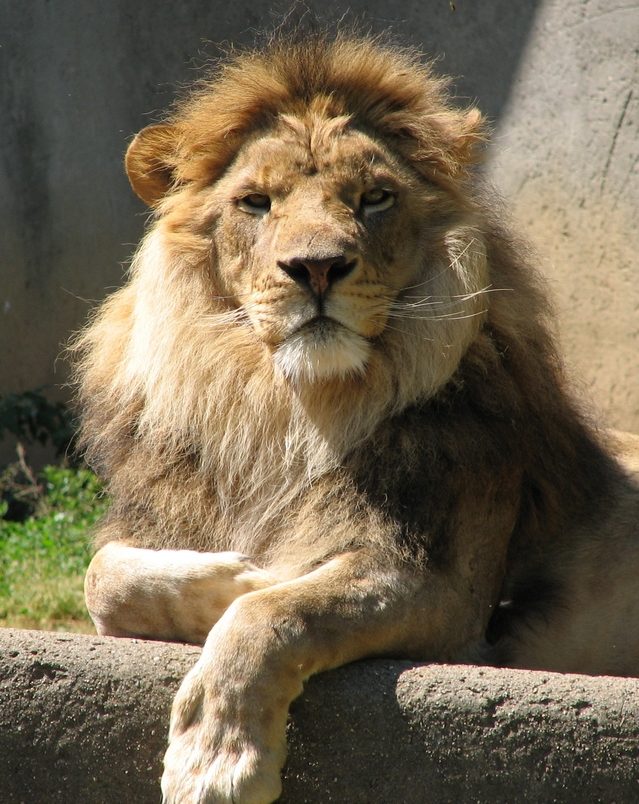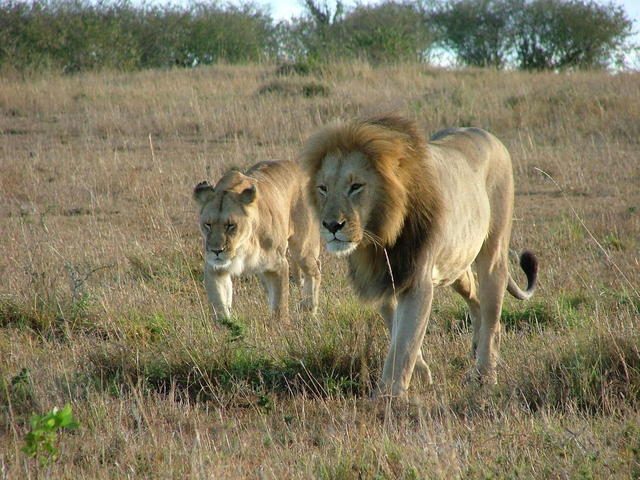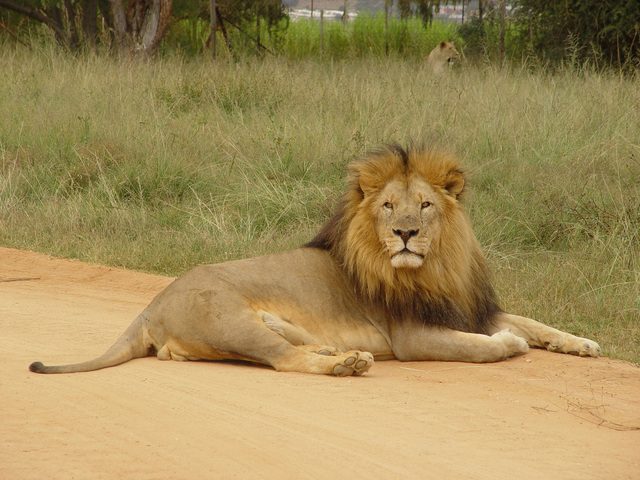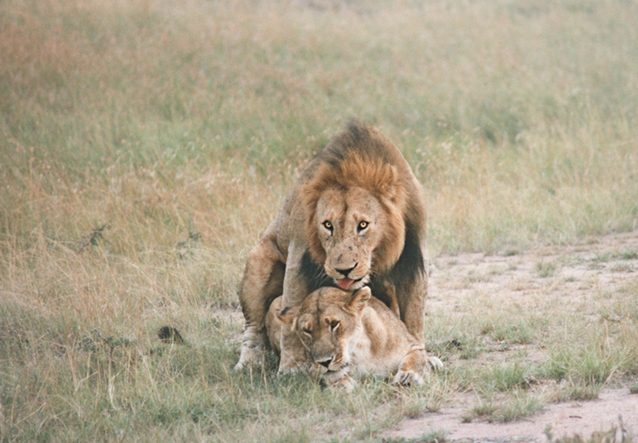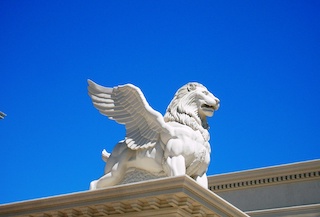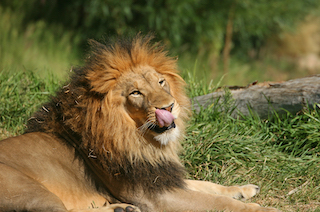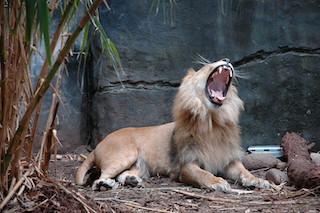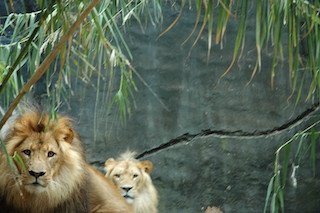Mane Of Male Lion Attracts Females
A male lion is much heavier and larger than a female. The heaviest recorded one was 272 kg from Kenya. Within the pride, the males are the leaders and fathers of the cubs. They guard, patrol, protect, defend and maintain the boundaries of the pride’s territory, which can be up to 260 square km. Male lions can go to great pains to mark their parcel of land. They do it by roaring, chasing off intruders, leaving scuff marks and marking it with urine.
Males grow mane
Lion is the only cat family member in which the males differ from the females in appearance – the mane. No other cat has it. The mane is the unique trait, distinctive characteristic and defined feature of a male lion. The thick mane of black or brown hair encircles the neck and head. But it does not apply to the young cubs where both the gender looks the same. A 12-month-old male lion begins to grow longer hair around its necks and chests, which is the beginning of the growth of the mane. It continues to get longer and darker with age. Its length and darkness are affected by where it resides. Lions living in warmer places have lighter, shorter hairs than those in cooler regions. It can also change as it gets colder and hotter throughout the year.
Theories of mane
Nobody knows for certain why a male lion has a mane and not a female. Maybe it serves just as an ornamentation, akin to the showiness of the beautiful feathers on a male peacock. Researchers are still studying to understand why they have manes. So far, there are five theories as to why the males grow a mane. It protects the neck during fights. It keeps cool and clean in hot climates. The mane blends in and camouflages. The female lions get sexually attracted to a the mane. And it intimidates other male lions.
Protects its neck
A century or two ago, Charles Darwin theorized that the mane acts as a shield to protect the vulnerable neck during fights against other males. Over time, however, it was observed that when lions fought, they rarely went for the neck but attacked from the rear. So, the mane is not there to protect its neck.
Keeps it cool
And curiously enough, in the sweltering heat where lions gather, the bushy fringe does nothing to cool the body and in fact attracts parasites. Moreover, darker manes take a physical toll by raising the lion’s body temperatures. So, the mane of the lion does not serve the purpose of a fan in warmer temperatures. Mane is not a fan.
Blends in well
The popular belief is that the mane of the lion blends in and camouflages well with its surroundings where it resides. In fact, the mane makes the lion stand out like a sore thumb against the scenery. It does not even blend in well with the natural habitat where they live. So, the camouflage theory is out of the way.
Sexually attracts females
A lion with a substantial mane means it has lived long enough to grow such a sporting neck hair. That implies it has some sturdy genes and healthy constitution. Over the centuries, the female lions subconsciously believe that a huge ring of impressive, thick, lush mane equals a virile baby daddy and an able guardian of its offspring. Thus, manes act as secondary sexual feature. Now, here is an interesting study to support that. The Serengeti lion project determined through experiments with dummy lions that females prefer male lions with darker manes. So, the mane of the lion signals sexual maturity and health status to the females. Therefore, lionesses tend to favor lions with manes. And the darker and thicker, the better.
Intimidates other males
A lion’s mane is used not only to attract female lions but also to intimidate competing males. The length, size, darkness, color and quality of it determines the lion’s overall fitness. A good brush of hair signals information to other rival males about a lion’s competence and fighting ability. It sends a message that such a lion is too strong to risk fighting for the pride control thereby reducing fights for dominance. Reduced power struggle increases survival and more mating opportunities leading to more offspring.
Mating of males
Being the pride leaders means earning the right to mate the female members of the pride. Both male and female lions are ready to mate at 3 to 4 years old. The lion checks the heat of a lioness by sniffing her reproductive organs. Then he joins the female who is in heat and stays with her constantly. They usually mate every 20 minutes for less than a minute over a period of five days. Lions have spikes on their penises which are supposed to cause trauma to the vagina and trigger ovulation. Interestingly, pride males do not compete to mate with a receptive lioness because very soon each loses interest in her. So, it is not necessary to compete for her favors.
Mating of females
Lionesses come into estrous at the age of three. The female may turn to one of the other males in the pride when the first bloke is worn out. But sometimes female lions will have sex with an unfamiliar male lion from outside her pride, and this may cause a fight between the males of the two groups. If she doesn’t conceive, then she goes back into oestrus after two weeks, and this continues throughout the year.
5 Frequently Asked Questions About The Mane Of Male Lions
To receive a colourful digibook about lion with videos, images and text, please fill out the following form or simply email us on safaris@safari-center.com

